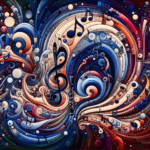The Eb Major scale, comprised of the notes E, F#, G#, A, B, C#, and D#, holds a unique place in clarinet music. It brings a bright sound that captures attention and has found its way into a variety of music genres, particularly classical and jazz. Understanding its historical significance not only enhances appreciation but also provides practical advantages for clarinetists.

Clarinet Fingering Charts are always FREE at MartinFreres.net!
Classical Roots of the Eb Major Scale
The importance of the Eb Major scale dates back to classical composers like Mozart and Beethoven. They often used this scale in their compositions, allowing clarinetists to create rich melodies that showcase their instrument's full range. The clear, bright tone of Eb Major produces an appealing sound that fits perfectly with elegant musical phrases, a quality that composers often took advantage of.
Jazz and Beyond: The Eb Major Scale's Influence
The Eb Major scale isn't limited to classical music; it also plays a significant role in jazz. Famous clarinetists such as Sidney Bechet created spicy, sweet sounds with this scale, bending notes to form engaging melodic lines. Musicians from various genres have found that using the Eb Major scale in their music enhances improvisation and opens up new possibilities for creative expression.
| Genre | Notable Uses of Eb Major Scale |
|---|---|
| Classical | Mozart's Clarinet Concerto in A, K. 622 (transposed for Eb clarinet) |
| Jazz | Sidney Bechet's “Petite Fleur” |
| Film Scores | John Williams' “Hedwig's Theme” from Harry Potter |
Practical Applications and Practice Suggestions
Including the Eb Major scale in your warm-up routine is key for improving technique and tone quality. Here's a helpful approach: begin with long tones, then move to staccato notes to develop both control and agility. Slowly increase your tempo, and try playing the scale in different octaves while incorporating various articulations like slurred and tongued notes. This practice can greatly enhance your dexterity and understanding of your instrument's potential.
Additionally, try smoothly transitioning into scales from familiar melodies. Working with historical pieces that feature the Eb Major scale can deepen your appreciation, whether you choose a classical composition or a jazz standard. Musicians who have mastered this skill often find they can effortlessly blend different styles and genres.
The Impact of Instrument Quality
When working on scales like Eb Major, the quality of your instrument can significantly affect your performance. High-quality clarinets, such as those made by Martin Freres, are known for their excellence, enabling musicians to achieve clarity and richness in their playing. This isn't just hearsay; many accomplished musicians highlight the noticeable difference a well-crafted clarinet makes in tone and playability.
The Eb Major Scale in Clarinet Technique Development
Throughout the years, the Eb Major scale has been integral to the advancement of clarinet techniques. As musicians explore new sounds and push boundaries, this scale remains a fundamental component. It helps clarinetists perfect techniques like altissimo register playing and rapid slurs—skills that are valuable for those aiming to excel in their craft.
Revisiting the Eb Major scale can be rewarding for both experienced musicians and beginners. It allows you to connect with a rich musical heritage and explore expressive possibilities that highlight the clarinet's unique voice. Remember, every time you create a melody using the Eb Major scale, you're participating in a long-standing musical tradition!
Table of Contents
- Classical Roots of the Eb Major Scale
- Jazz and Beyond: The Eb Major Scale's Influence
- Practical Applications and Practice Suggestions
- The Impact of Instrument Quality
- The Eb Major Scale in Clarinet Technique Development








